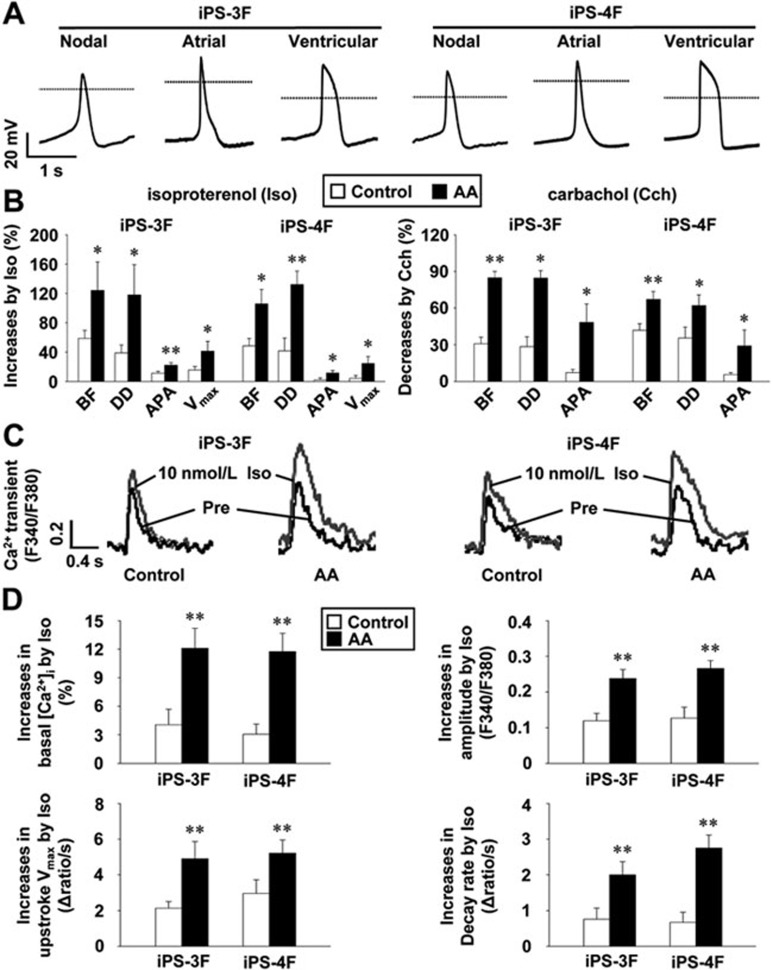Figure 5.
AA enhances the response of day 16-18 iPS-CMs to β-adrenergic and muscarinic stimulations. (A) Representative APs of AA-induced iPS-CMs showing characteristics of nodal-like, atrial-like, and ventricular-like APs. Dotted lines indicate 0 mV. (B) Comparison of Iso (10 nmol/l)-stimulated increases (left panel) and Cch (1 μmol/l)-induced decreases (right panel) in characteristics of APs between control and AA-applied iPS-CMs (n = 10-13). BF, beating frequency; DD, diastolic depolarization; APA, AP amplitude; Vmax, maximum rise rate. (C) Representative tracings of spontaneous rhythmic Ca2+ transients with (grey) and without (black) Iso-simulation (10 nmol/l). (D) Iso-induced increases in basal [Ca2+]i, APA, upstroke Vmax, and decay rate of Ca2+ transients in control or AA-applied iPS-CMs (n = 12-13). Data are expressed as means ± SEM. *P < 0.05, **P < 0.01 vs control.

